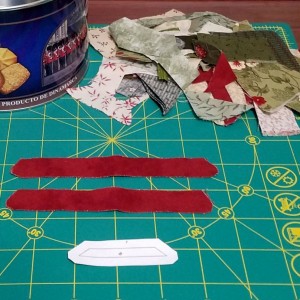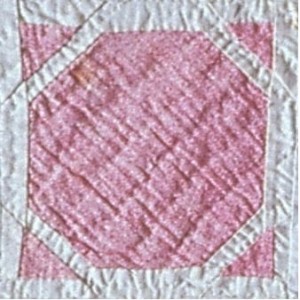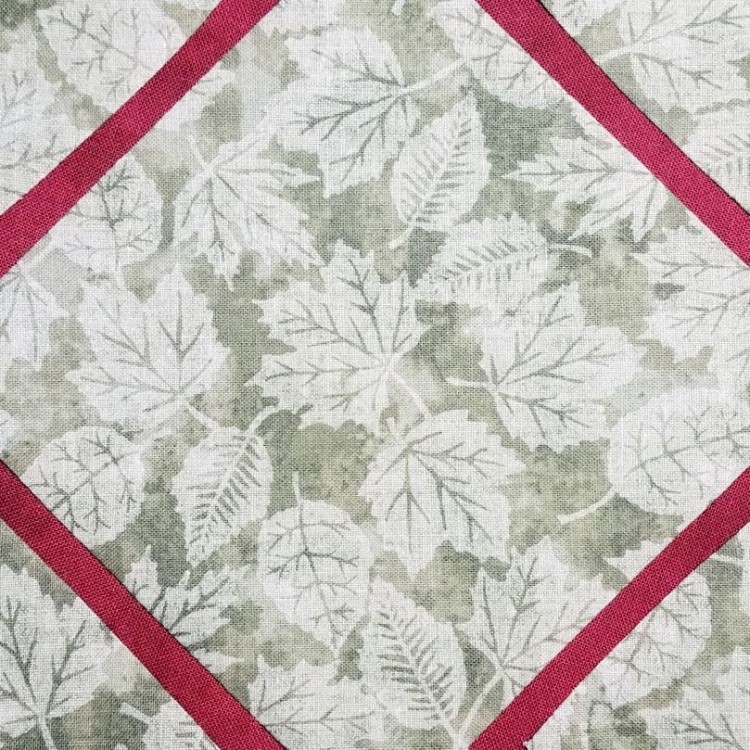I love this leaf print, but it’s not exactly the kind of fabric they had available during the Civil War. Initially, the decision about whether or not to use it was made for me, because the scrap I owned of this lovely fabric was just too small to make the block. But then my friend Judi donated a larger piece of the fabric to the cause, and the debate over whether to use this anachronistic print was back on. You can see from the photo of the completed block how that debate went down.
The block construction was pretty simple. A few of the sources I consulted appliquéd the thin strips onto a single square, but that’s not my style. I cut out the (sort of) octagon shape, the four triangles, and the little red strips to stitch together. I was so pleased to finally be able to use these red bias strips from my scrap tin (left over from one of my disastrous attempts at my first triangle block):

The historical accuracy concerns were not just limited to the fabric and the construction techniques though. There is apparently some debate over the pattern itself for this particular block. Susan Gatewood’s pattern for this one (block D6 on her pattern site) indicates that the original block had an extra border around the edge, which was not reflected in the official pattern. Here is a photo of Jane Stickle’s original block:

Now, understand that ALL of the blocks on her quilt have a white border around the edge, so it’s a little tough to say for sure whether the white edge on this photo is part of the block, or the border that goes around all the blocks. Yes, the diagonal lines in that white border sort of imply that it’s part of the block, but when you see it in the context of the entire quilt, it seems like the edges of the pink triangles line up pretty well with the edges of the surrounding blocks (implying that the white border pictured here is not part of the block).
For me, the jury’s still out on whether it’s part of the block or not. If you look closely, the edges of the pink octagon don’t all line up with the edges of the pink triangles. It’s possible that this is an example of that dorky handmade look, where nothing lines up quite right, but that’s what makes it so charming.
Ultimately, I decided that if the pattern didn’t match the original quilt, I would fix the pattern only if it seemed like Jane purposely made it the way she did. If it seemed like she was just trying to fudge ill-fitting pieces into alignment, there was no need to recreate that. So, my version of the block remains borderless.
While we’re all using the same quilt pattern, everyone’s approach is different, so each re-creation of this historical quilt has its own unique quirks. Some convert the patterns so they can do paper piecing. Some change the order and even the number of blocks. My version has a leaf print of questionable authenticity, an unusual background color choice, and is only occasionally particular about exactly matching the original.
Note: Rest assured that I completed the August portion of the UFO Challenge, but since I actually completed two (count them, two!) blocks in August, I’ll talk about my August progress in the next blog entry. Stay tuned!
